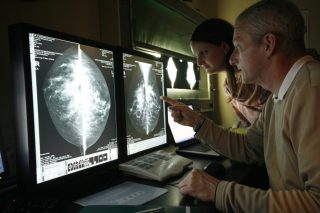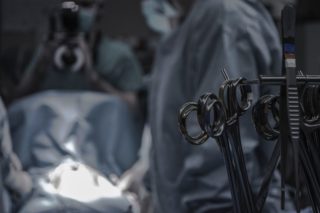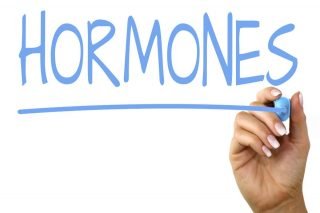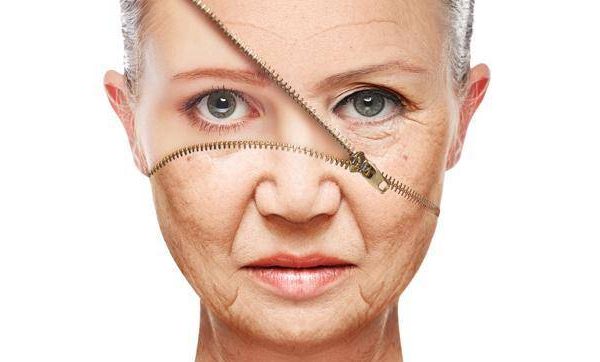Although seen as a predominantly female disease, breast cancer affects men too. If you are worried about your breast health, it is important to remember the significance of early detection.
Fear of coronavirus should not lead to delayed diagnosis and treatment of cancer with inevitable, unnecessary loss of life. The underlying principles of breast cancer diagnosis and treatment do not change due to the virus but can inform the management of diagnostic and therapeutic procedures. Breast practices outside of hospitals present a low-risk environment for infection with the virus, provided basic precautions are taken.
What is the incidence of breast cancer in men?
For every 100 women that we see with breast cancer, we see one man. Therefore the risk is low, particularly in comparison to cancers such as lung, prostate, or colon. The National Cancer Registry states that the lifetime risk of suffering from breast cancer in males is between 1 in 500 and 1 in 1000, depending on race. Men of any age may develop breast cancer. However, the risk is higher in men between 60 and 80 years of age.
Do men get the same types of breast cancer as women?
The most common type of breast cancer seen in men is infiltrating ductal carcinoma. This is cancer that has spread beyond the cells lining the ducts in the breast. It is the most common type of breast cancer in women as well as men. All other forms of breast cancer are exceedingly rare in men. 
Causes
Cancer-causing genetic abnormalities are at least 2 – 4 times more common in males with breast cancer than in females. Diagnosis of a disease-causing genetic mutation will greatly impact on the patient’s management and also has important consequences for other family members. Genetic testing has, therefore, become part of routine care in males with breast cancer.
Additional risk factors
- Radiation exposure
- Having a disease related to high levels of oestrogen in the body, such as cirrhosis (liver disease) or Klinefelter syndrome (a genetic disorder).
Breast cancer detection in men
The most common sign is a lump in their breast.
A man’s breasts are easier to examine due to their small size. However, in contrast to women, health care seeking behavior in men is not well developed and most cases that we see are fairly advanced.
Testing for male breast cancer
- Biopsy: The removal of cells or tissues so they can be viewed under a microscope by a pathologist to check for signs of cancer. This is usually done by taking a small core of tissue using a needle under local anesthesia.
- As men often present with advanced breast cancer, they will have to undergo examinations to look for spread to other organs such as the lungs, liver, and bone by appropriate examinations.
What is the normal treatment?
Treatments for breast cancer in men and women are generally the same. Many men benefit from a combination of different treatments. Here’s an overview of the various approaches:
Surgery

Photo by Piron Guillaume on Unsplash
Mastectomy is the removal of the entire breast. Men don’t have much breast tissue therefore breast-conserving surgery is not possible. The surgeon will also remove one or more of the lymph nodes for pathologic examination to assess if the cancer has spread.
Radiation Therapy
Radiation is used commonly after surgery for breast cancer in men, as these tumors are often advanced and without radiotherapy, there is a high chance of recurrence.
Chemotherapy
It’s a treatment with drugs — either taken by mouth or by injection — that attack cancer cells. Chemotherapy is often used after surgery to lower the risk of the cancer coming back. For men with advanced cancer or cancer that has spread to other parts of the body (metastatic cancer), chemotherapy may be the primary treatment.
Hormonal Therapy
Certain types of breast cancer require certain hormones to grow. Hormonal therapy blocks the effects of these hormones, choking the cancer. Your doctor might use tamoxifen or other drugs. The effects of aromatase inhibitors like Arimidex, Femara, and Aromasin haven’t been studied much in men. Sometimes, removal of the testes or suppression of their function by drugs is used to reduce the amount of certain male hormones in the system. Men with breast cancer should never take testosterone.
Hormonal therapy is often used after surgery to lower the risk of the cancer coming back. For men with locally advanced or metastatic cancer, it may be the primary treatment.
Biological Therapy
This is a new approach. Some men have an excess of a protein that makes cancer spread quickly. Herceptin is a drug that’s been approved to treat metastatic breast cancer. It stops this protein from making the cancer cells grow. It may also boost your immune system, giving it more strength to fight the cancer itself.
What role do male hormones and/or estrogen play?
Evidently, hormones play an important role, but because the incidence of the disease in men is so rare, there is no intensive research available and the precise role of hormones is unknown. 
Effects of estrogen blockers
Men have very limited side effects of estrogen blockers. We previously had an orchiectomy (surgery in which one or more testicles are removed) as part of the hormonal treatment, however, we found this not to be acceptable to the patients.
Are the chances of survival higher for men?
No – the chances for survival are lower than for women for a variety of reasons. The most important being that men are less likely to go to a doctor and therefore present with advanced cancers. Due to the anatomy of the male torso with very little breast tissue, small tumors infiltrate early into surrounding tissue and from there easily spread via the bloodstream to distant organs.
Is a man’s daughter at risk of developing cancer?
Yes. Every man that is diagnosed with breast cancer should go for genetic testing. Chances are high that he is a carrier of breast cancer gene mutations. His children may inherit this mutation.



![women [longevity live]](https://longevitylive.com/wp-content/uploads/2020/01/photo-of-women-walking-down-the-street-1116984-100x100.jpg)










